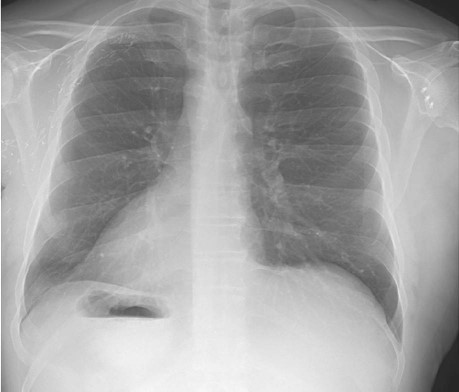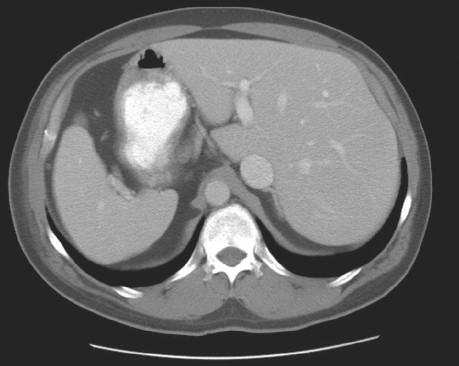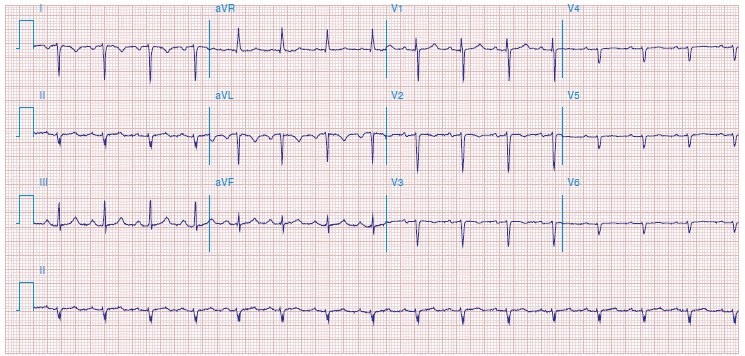
Written By:
 Dr. KK Aggarwal
Dr. KK Aggarwal
 Dr. KK Aggarwal
Dr. KK Aggarwal
Published On: 16 Dec, 2021 12:48 PM | Updated On: 16 Apr, 2025 3:03 PM
How rare is Dextrocardia?
Dextrocardia is a rare condition usually found incidentally, in association with other congenital abnormalities. The incidence of dextrocardia has been found to be less than 1%, with a recent study reporting the incidence to be only 0.22%.
The Meaning Behind The Name.
Dextrocardia.
What does the word actually mean?
Well, it’s pretty straightforward to understand if you break the word down. “Dextro” comes from the Latin word Dexter which means ‘on the right side’, whereas “cardia” is derived from the Greek word Kardia, meaning the ‘heart’.
To put it in context for you, dextrocardia means to have the heart on the right side rather than on the left.
Is Dextrocardia A Disease?
Yes, and no.
Dextrocardia isn’t a contagious disease, one that spreads from an infected person to a healthy one. Rather, it is a congenital defect, a condition one’s born with.
What Happens In Dextrocardia?
A lot of things happen, indirectly, if not directly, in patients having this rare heartcondition. This congenital anomaly is infamous for being associated with a plethora of other birth defects like situs inversus totalis and other heart abnormalities.

image credit Google
Chest Radiograph Shows Dextrocardia And Right-Sided Gastric Bubble, Indicative Of Situs Inversus.
In a normal human being, the heart is positioned centrally with its tip, called the apex of the heart, pointing leftward and downward. However, in exceptional cases of people having this condition, the apex points rightward and downward, as if a mirror-image of the normal heart.
Patients diagnosed with dextrocardia usually have a heart anatomically different from the rest of the population, along with other associated congenital defects like:
● Discordant atrioventricular connection
● Univentricular atrioventricular connection
● Ventricular septal defects
● Pulmonary artery anomalies
Types Of Dextrocardia
Since the condition is associated with such a wide number of other congenital defects, it is only customary for clinicians to categorize and differentiate it into various types for ease of diagnosing and following up with the patients.
When dextrocardia occurs without situs inversus, when the sites of the organs are indeterminate, or if isolated levocardia is present, associated complex multiple cardiac anomalies are usually present, as mentioned previously.

Image credit - google
Computed tomographic (CT) scan shows the liver on the left side and spleen on the right, which confirms the presence of situs inversus totalis.
In contrast, mirror-image dextrocardia is usually observed with complete situs inversus, which occurs most frequently in individuals whose hearts are otherwise normal. Kartagener syndrome is a commonly associated anomaly here, giving rise to male infertility.
To summarize, dextrocardia can be classified into:
● Isolated Dextrocardia (Dextrocardia with Situs Solitus), where only the heart is present on the other side of the body, whereas the rest of the organs are all in their proper locations.
● Mirror-Image Dextrocardia (Situs Inversus Totalis), where all the visceral organs of the body, including the heart, are present on the opposite side of their usual occurrence. That is to say - the heart points to the right, the liver is present on the left, the spleen on the right, and so on.
● Dextrocardia with Situs Ambiguous, where the heart appears to point rightward, but the locations of the other organs cannot be determined with accuracy.
● Dextrocardia of Embryonic Arrest, where the heart is placed further rightward into the chest cavity than it is normally. Pulmonary hypoplasia is a commonly associated anomaly in this case.
Read more - How is the heart defects in babies managed?
How Often Are People Born With Dextrocardia?
Epidemiologically, studies report that the incidence of people being born with heart on right side is estimated to be 1 in 12,019 pregnancies, giving rise to an occurrence rate of 0.0083%. The study that published this statistic also stated that 48 of the 81 cases identified were done so before the mother gave birth.
The study also summarized that of these 81 cases, 27 cases were situs solitus, 30 situs inversus, and 24 situs ambiguous. Heart anomalies (cardiac malformations) were found in 26 of 27 cases of situs solitus, 7 of 30 cases of situs inversus, and 24 of 24 cases of situs ambiguous. Anomalies in other organs (noncardiac malformations) were identified in 10 of 27 cases of situs solitus, 6 of 30 cases of situs inversus, and 14 of 24 cases of situs ambiguous.
In conclusion, the number of cases of situs inversus, situs solitus, and situs ambiguous was similar. Twelve pregnancies were terminated, 3 fetuses were stillborn, and 2 women chose compassionate care. 91% of those intended to be treated were alive at follow-up.
The Long-Term Outlook
Medically, dextrocardia is diagnosed via ECG or imaging techniques. On the prospective patient, ECG leads must be placed in mirrored positions. The same protocol is followed when placing defibrillator pads on such a patient for defibrillation.
A Japanese study showed that 1,753 fetal cardiac echocardiograms (ECG), taken over five years, revealed merely 2 cases.

Image credit - Google
ECG showing Dextrocardia with: (1) inverted P waves in I and aVL; (2) negative QRS complex and T wave in I; and (3) progressively decreasing voltage across the precordium.
A patient with right side heart may experience minor to major complications, depending on the associated anomalies. They may be more prone to infections, digestive system blockages, amongst other conditions.
Dextrocardia needs to be treated if it prevents other vital organs from functioning properly. Cases of intestinal obstruction need immediate surgery to prevent life-threatening complications. Pacemakers and surgery to correct septal defects often prove to be useful in some cases of dextrocardia.
People with isolated dextrocardia are often slated to live normal lives; however, unfortunate ones with more severe associated complications may face health issues for the rest of their lives.
References:
1. “Dextrocardia: An Incidental Finding”, Dr. Syed Wamique Yusuf, et al., Texas Heart Institute Journal.
PMID: 19693317
2. “A Population-Based Study of Cardiac Malformations and Outcomes Associated With Dextrocardia”, Dr. Claudine M. Bohun, et al., The American Journal of Cardiology.
PMID: 17631088
3. “Dextrocardia”, Wikipedia.
https://en.wikipedia.org/wiki/Dextrocardia
4. “Dextrocardia”, Healthline Blog.
https://www.healthline.com/health/dextrocardia

Dr. KK Aggarwal
Recipient of Padma Shri, Vishwa Hindi Samman, National Science Communication Award and Dr B C Roy National Award, Dr Aggarwal is a physician, cardiologist, spiritual writer and motivational speaker. He was the Past President of the Indian Medical Association and President of Heart Care Foundation of India. He was also the Editor in Chief of the IJCP Group, Medtalks and eMediNexus














Please login to comment on this article